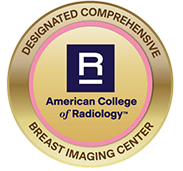New Guidelines Would Result in Thousands of Unnecessary Breast Cancer Deaths

The American College of Physicians recently issued guidance for breast cancer screening of average-risk women with no symptoms symptoms for breast cancer should undergo breast cancer screening with mammography every other year. The American College of Radiology and Society of Breast Imaging have issued a joint statement in response:
New ACP Guidelines Would Result in Thousands of Unnecessary Breast Cancer Deaths
Women and Healthcare Providers Should Be Skeptical of the ACP and USPSTF Guidance for Average Risk Women
Screening only women ages 50-74 every other year, as now recommended by the American College of Physicians (ACP) and the US Preventive Services Task Force, may result in up to 10,000 additional, and unnecessary, breast cancer deaths in the United States each year. That approach would also likely result in thousands more women enduring extensive surgery, mastectomies and chemotherapy for advanced cancers – and do little to nothing to address overdiagnosis or the harms of screening named in the ACP guidelines.
The American Cancer Society (ACS), USPSTF, American College of Radiology (ACR) and the Society of Breast Imaging (SBI) agree that the most lives are saved by annual screening starting at age 40. The ACR and SBI continue to recommend that women start getting annual mammograms at age 40 and continue as long as they are in good health. The ACR advises women to have a risk assessment by the age of 30 to see if earlier screening is right for them.
Inaccurate Claims
The ACP claims that guidelines recommending that screening start at age 40 ignore the “low incidence of breast cancer for women younger than 60 years.” In fact, the majority of in situ cancer and nearly half of all breast cancers occur in women under 60. Also, the majority of life years lost to breast cancer occur in women diagnosed younger than age 60. Breast cancer is the most common cancer in women and the second leading cause of cancer death in women. It should be taken seriously at all ages.
The ACP also claims “Every other year mammography screening results in no significant difference in breast cancer mortality.” This is incorrect. There have been no randomized controlled trials to test this ACP claim. In fact, the NCI/CISNET models that were used by the USPSTF and the ACS actually show a major decline in deaths among women screened annually vs. every other year.
Racial Disparities
The ACP guidelines also fail to address groups who have a greater risk of developing breast cancer at a young age and dying from the disease. For instance, black women have a 30 percent higher breast cancer death rate than white women (DeSantis et al). Also, breast cancer incidence peaks in the late forties in non-white women and in the sixties in white women (Stapleton et al). The ACP approach may exacerbate racial disparities in breast cancer outcomes.
The ACP Guidance Underestimates Mammography Benefits and Greatly Overstates Risk of Harm
More doctors support annual screening in women 40 and older than screening later in life or less frequently. National Cancer Institute (SEER) data show that, since mammography became widespread in the 1980s, the U.S. breast cancer death rate, unchanged for the previous 50 years, has dropped 43 percent. A recent study in Cancer showed that women screened regularly for breast cancer have a 47 percent lower risk of dying from the disease within 20 years of diagnosis than those not regularly screened. Large studies (Otto et al. and Coldman et al) show that regular mammography use cuts the risk of dying from breast cancer nearly in half.
Screening risks are often overstated due to faulty assumptions, methodology and hyperbole in articles on which such claims are based. Overdiagnosis means finding cancers that will not grow to kill you before something else does. Overdiagnosis will not be reduced by delayed or less frequent screening. These “overdiagnosed” cancers would still be found by the next screening exam and result in the same work-up, biopsy and treatment. If an aggressive cancer goes undiagnosed because of a longer interval between screenings or starting screening at a later age, treatment will be delayed with higher potential morbidity and a lower chance of saving a woman’s life. Screening-detected breast cancers do not disappear or regress if left untreated.
A British Medical Journal study, using direct patient data, shows that breast cancer overdiagnosis is about 2 percent. An article in The Oncologist shows that studies with high overdiagnosis claims are not well-founded. American Cancer Society findings re-confirmed that overdiagnosis claims based on modeling studies are inflated.
A Journal of The American Medical Association (JAMA) study has shown that normal and understandable anxiety from inconclusive mammogram results or false positives is brief and has no lasting health effects. Research shows that nearly all women who have a false-positive exam still endorse regular screening and want to know their status.
Short- term anxiety from test results, a small percentage of women called back to double-check something and overstated overdiagnosis claims do not outweigh the thousands of lives saved each year through annual mammography screening starting at age 40.
Shared decision making requires more accurate accounting of the pros and cons, as well as a more nuanced approach to assessing individual patient risk factors than proposed by the ACP.

